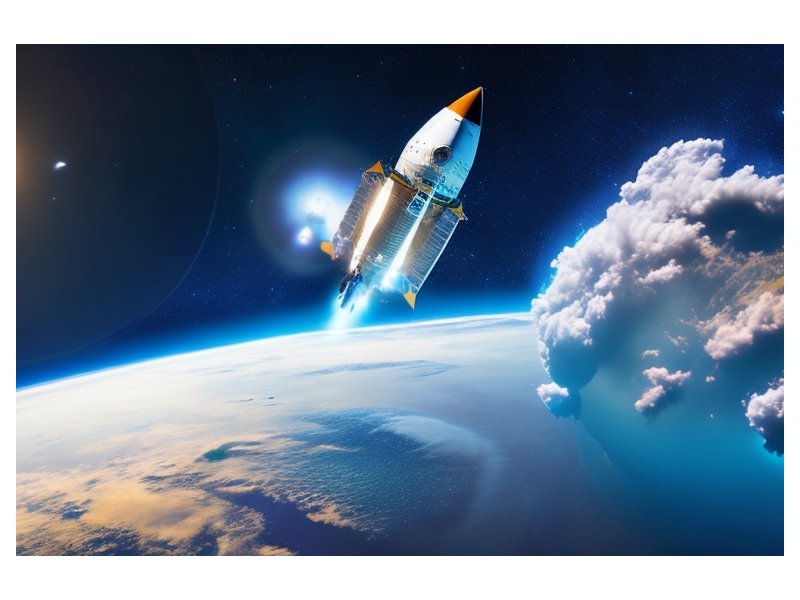
Introduction:
Space exploration has always captivated the human imagination, pushing the boundaries of what is possible and inspiring us to reach for the stars. Over the years, incredible advancements in technology have been the driving force behind our ability to explore the cosmos. In this blog post, we will delve into some of the cutting-edge technologies that are revolutionizing space exploration and paving the way for humanity's continued journey into the unknown.
1. Robotics and Autonomous Systems:
Robotic technology plays a crucial role in space exploration, enabling us to go where humans cannot and gather valuable information. From rovers like NASA's Mars rovers (such as Spirit, Opportunity, and Curiosity) to the European Space Agency's Philae lander on Comet 67P, these machines have provided us with unprecedented access to distant celestial bodies. They are equipped with advanced sensors, cameras, and instruments that allow them to analyze soil samples, capture images, and even perform experiments.
Furthermore, autonomous systems are being developed to enhance the capabilities of robotic explorers. These systems can make independent decisions based on predefined algorithms and data inputs, reducing the need for constant human intervention and enabling real-time adaptation to changing conditions. This technology is vital for future missions, where human presence may not be feasible or safe.
2. Additive Manufacturing (3D Printing):
Additive manufacturing, more commonly known as 3D printing, has made significant contributions to space exploration. The ability to manufacture tools, spare parts, and even entire habitats in space using 3D printers has the potential to revolutionize the way we approach long-duration missions. It reduces the reliance on Earth for resupply missions and enables astronauts to create necessary items on-demand, minimizing mission costs and risks.
NASA has already experimented with 3D printing on the International Space Station (ISS), successfully manufacturing tools and small components. This technology opens up possibilities for building structures on other celestial bodies, such as the Moon or Mars, using locally available materials, thereby reducing the need to transport heavy payloads from Earth.
3. Ion Propulsion:
Traditional chemical rockets have been the primary means of propulsion for space exploration. However, ion propulsion is emerging as a game-changing technology that offers higher fuel efficiency and longer mission durations. Ion propulsion systems work by electrically charging and accelerating ions to generate thrust. While the initial acceleration is slow, the continuous acceleration over time allows spacecraft to reach higher velocities and travel vast distances with minimal fuel consumption.
NASA's Deep Space 1 and the Dawn spacecraft have successfully employed ion propulsion, greatly extending their operational lifetimes and enabling them to explore multiple destinations. Ion thrusters are particularly suited for deep space missions where constant acceleration is required, and their increasing adoption promises to revolutionize interplanetary travel.
4. Artificial Intelligence and Machine Learning:
Artificial intelligence (AI) and machine learning (ML) are transforming space exploration by enabling faster and more efficient data analysis, mission planning, and decision-making. AI algorithms can process vast amounts of data collected by satellites and probes, identifying patterns, anomalies, and valuable scientific insights. ML algorithms can also optimize spacecraft trajectories, reducing travel time and fuel consumption.
Additionally, AI-powered robotics can autonomously navigate, perform complex tasks, and adapt to unforeseen circumstances. For instance, NASA's Mars Helicopter, Ingenuity, autonomously conducts flights on Mars, capturing stunning aerial imagery and expanding our understanding of the Red Planet.
Conclusion:
Cutting-edge technologies are the driving force behind the ongoing advancements in space exploration. Robotics and autonomous systems, additive manufacturing, ion propulsion, and artificial intelligence are just a few examples of the incredible innovations shaping the future of space exploration. As these technologies continue to evolve, we can look forward to even more ambitious missions, deeper understanding of our universe, and the realization of long-held dreams of venturing beyond our home planet. The frontiers of space are beckoning, and technology is leading the way.
Share This News